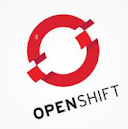Helm
Helm uses a packaging format called charts. A chart is a collection of files that describe a related set of Kubernetes resources. A simple chart is deploying a simple application or collection of complex application.
Kubernetes Persistent Volumes:
Kubernetes Persistent Volumes (PVs) provide a robust framework for managing durable storage in containerized environments.
Persistent Volumes is crucial for effectively managing stateful applications in Kubernetes, ensuring that data persists as needed and storage resources are utilized efficiently.
A Persistent Volume (PV) is a storage resource in a Kubernetes cluster that exists independently of any individual Pod, allowing data to persist beyond the lifecycle of Pods.
Persistent Volume Claims (PVCs): A Persistent Volume Claim (PVC) is a request by a user for storage, specifying size, access modes, and other parameters. Kubernetes then binds the PVC to an appropriate PV that meets the requested.
PVs support different access modes, such as:
1.ReadWriteOnce (RWO): Mounted as read-write by a single node.
2.ReadOnlyMany (ROX): Mounted as read-only by multiple nodes.
3. ReadWriteMany (RWX): Mounted as read-write by multiple nodes.
Storage Classes: Storage Classes in Kubernetes define different classes of storage, allowing for dynamic provisioning of PVs with varying performance and availability characteristics. This enables administrators to offer multiple storage options to end users.
Dynamic vs. Static Provisioning: PVs can be statically provisioned by administrators or dynamically provisioned based on Storage Classes when a PVC is created, providing flexibility in how storage is allocated.
Lifecycle Management: The lifecycle of a PV is independent of any Pod that uses the PV. This means that data stored in a PV can outlive the Pods that access it, ensuring data persistence across Pod restarts and rescheduling.
Reclaim Policy: PVs have a reclaim policy that determines what happens to the underlying storage resource after the PVC is released.
1.Retain: Keeps the data intact for manual reclamation.
2.Recycle: Performs a basic scrub
3.Delete: Deletes the storage resource, such as an AWS EBS volume. These policies help manage the lifecycle of storage resources effectively.
Binding Process: When a PVC is created, Kubernetes matches it to a suitable PV based on the requested storage size and access modes. Once bound, the PV is exclusively associated with that PVC, ensuring consistent and reliable storage for the requesting Pod.




![Large Language Model [LLM] - Introduction](https://blogger.googleusercontent.com/img/b/R29vZ2xl/AVvXsEg-E8SFnPRt87qewu9U3OWcc1AuHJ2vZKgI8XwdrD_NA0i3IX3ZPk20ilOO_2viXm3VaAn1t_IVW7EMsbH5fHfOLyszGAQeMYXhoregL3zg1Y2ooesjxo5-ArpxyPQFN4blM2yLJb355es1eNe1VMICpxf3pNYusUFvG6r_2Gc4t1uN9Grej8xPBRdLrHI/w72-h72-p-k-no-nu/AI.png)

![Large Language Model [LLM] - Introduction](https://blogger.googleusercontent.com/img/b/R29vZ2xl/AVvXsEg-E8SFnPRt87qewu9U3OWcc1AuHJ2vZKgI8XwdrD_NA0i3IX3ZPk20ilOO_2viXm3VaAn1t_IVW7EMsbH5fHfOLyszGAQeMYXhoregL3zg1Y2ooesjxo5-ArpxyPQFN4blM2yLJb355es1eNe1VMICpxf3pNYusUFvG6r_2Gc4t1uN9Grej8xPBRdLrHI/s72-c/AI.png)















No comments:
Post a Comment